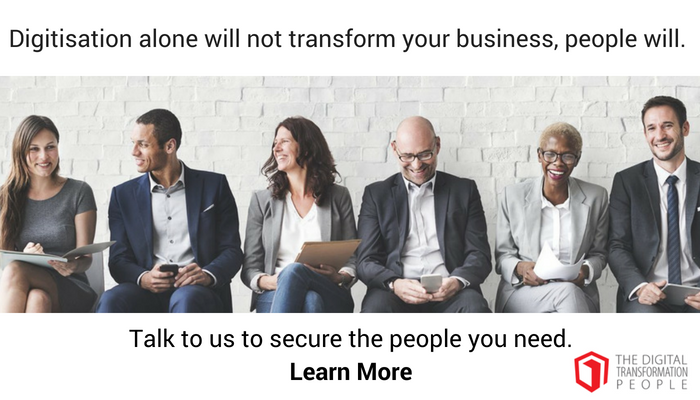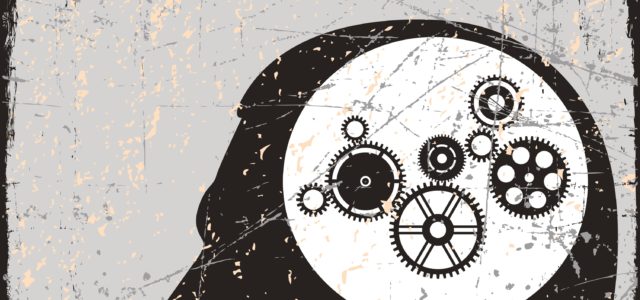In my class today on digital transformation I was fortunate enough to have a great guest speaker, Ramesh Latan, who helped transform Bell+Howell into a digital company. Ramesh gave a great talk and the students received it really well.
One of the key points he made was how much more efficiently (and rapidly) digital processes operate. While his key focus was the Internet of Things, he talked about speeding up a number of activities that support e-commerce: picking, sorting, packaging, addressing and mailing products.
All of these activities were sped up by IoT and robotics, often resulting in cycle times moving from multiple minutes to a few seconds, while at the same time increasing product throughput dramatically. It was really interesting to see the transformation.
After the class, one of the students asked a question which was interesting. His question, somewhat paraphrased, was this: what happens to people in the process when the process continues to speed up?
His concern was real – could people contribute to processes that are increasingly automated, increasingly data-driven and increasing occurring at speeds that humans can’t comprehend.
It reminded me of an old saying that a good friend used to share with me – you can think faster, but you can’t fish faster. This question gets at the heart of whether or not there will be opportunities for people as AI and robotics accelerate processes.
Why you can’t fish faster
While machines may be speeding up processes that can be automated, there are plenty of activities that cannot be sped up and will require a “human in the loop” as the saying goes, for quite some time.
For example, an e-commerce order may be received, picked, sorted, packaged and shipped in very little time – so quickly that we somewhat clumsy humans may simply get in the way of well-trained AI, robots, RPA and other activities that can be automated.
But no matter how fast the automated processes work, if a human is involved, the communication can only go so quickly. Just because I’ve sped up the automated processes does not mean I can speed up the communication processes.
Humans can only gather, interpret and understand information at a specific speed, and that speed isn’t necessarily increasing as we get more data and more technology. So while the processes may get faster, the interactions and context to communicate and emote with humans isn’t getting faster and demonstrates where humans play an important role.
The reference to fishing faster is an important one. As a person who enjoys fly fishing, by law I can only have one rod in the water at a time. It is a purposefully inefficient process. What’s more, if I am fishing for wily or easily spooked fish, I have to fish slowly and carefully, in order to present the lure to the fish at the right place and time without showing myself to the fish.
This kind of fishing cannot be sped up – it takes experience, craft and forethought, and is difficult to execute effectively. In other words, to be more effective at catching fish when the conditions limit me to one rod, one lure, relatively difficult fishing conditions and smart fish, I can’t fish faster, I have to fish smarter. And that’s an analogy to the opportunities for humans as processes speed up.
Fishing (and working) smarter
We humans will still have important roles, but the roles will shift. While we aren’t as fast as machines, we are far more flexible, more creative and less rule bound. This means we can augment the machines, use our creativity and insight, become better interpreters or explainers of what’s happening and do a better job of anticipating what will happen next.
Plus, we are better at communicating, putting things into context for our fellow humans, demonstrating understanding and empathy. That is – for some time to come – we will work smarter than the AI or ML or robots that we work with, and that’s where our opportunities lie.
In fact, there are many attributes of a process that will not speed up – which will continue to work at the pace of a human, but perhaps a human with a better understanding of the digital decision making and augmented processes.
To go back to the fishing analogy
Younger or less experienced people who fish think the activity is probabilistic – the more times I present the lure, the more chances I have for a strike. In some wildly optimistic setting that is potentially true, but your arm will wear out long before you’ll increase your catch.
It’s not the number of casts, or to some degree even the placement of casts, but understanding the water, the hatch, knowing where the fish are in a particular hole or channel, understanding drift, the angle of the sun and other nuances. More casts will simply spook the fish, and once spooked they won’t bite. Fishing smarter and slower is the best recipe for success.
This is completely transferable to almost all kinds of work. There will be components or attributes of the work that, like fishing, resist automation and place value on knowledge, flexibility, craft, insight and ingenuity. And this is where the next working generation will thrive.
It’s important that we understand what the emerging digital technologies can, and more importantly, should do. There are many difficult, repetitive activities that will be replaced and done far more efficiently, faster and with more consistency by machines.
We need to be thinking now about the activities that don’t translate to simple definition and automation, and building skills and competencies to do this work more capably. No matter how fast or efficient some digital processes become, there will almost always be a human at the beginning and end of the process, and we will work at a much more sedate speed, but require far more expansive interaction, context and communication.
You can read more by Jeffrey Phillips, here
Article by channel:
Everything you need to know about Digital Transformation
The best articles, news and events direct to your inbox
Read more articles tagged: Featured, Future of Work









